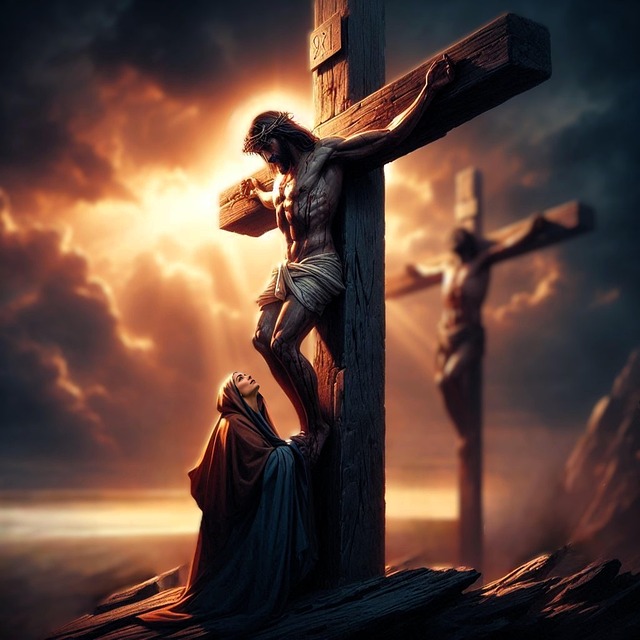This piece is adapted from the second edition of In The Footsteps of Jesus: A Chronicle of His Life and the Origins of Christianity.
Jesus may have traveled to the town that Matthew refers to as Magadan, which could mean Magdala (in fact, certain Greek manuscripts actually use the word “Magdala”). Magdala was a major processing center of the Galilean fishing industry. Among others, it was renowned throughout the region for its fish sauce, a popular condiment in Antiquity.
One of Jesus’ followers actually came from Magdala. Her name was Mary, “the Magdalene,” but the Gospels give us very little information about her background. Unlike other women named “Mary” in the Gospels, Mary Magdalene appears to be unattached, which was unusual. As scholars K. C. Hanson and Douglas Oakman have argued, Palestine in the time of Jesus was an overwhelmingly patriarchal society. A woman was loved and respected, but her movements were subject to the consent of the senior man in the family. Unwed women were not supposed to leave their home without a relative as an escort, but apparently, Mary ignored such restrictions, and freely went wherever the Teacher went.
Who was Mary of Magdala?
The answer to this puzzle may be that Mary Magdalene hailed from an affluent family, and thus enjoyed a greater level of independence.
Luke suggests as much when he says that she belonged to a group of women who “provided for them out of their own resources” (Luke 8:2-3). There is no question, however, that by the end of Jesus’ ministry, Mary had become one of the rabbi’s most prominent followers. It is she who, together with another small group of women, stood fearlessly at Jesus’ cross after all the Apostles had gone in hiding, lest they be arrested and condemned as well (Mark 15:40-41).
(What archaeology can tell us about the real Jesus.)
“Companion” of Jesus
The relationship between Mary Magdalene and Jesus has been sensationalized in fictional thrillers like The Da Vinci Code. The sober truth, however, is that scholars have known about these so-called revelations for a long time, particularly since the discovery of the Nag Hammadi codices in Egypt in 1945. This collection includes a number of “Gospel”-type documents written for Gnostic Christian communities. The Gospel of Philip, for example, states that “the companion (koinōnos) of the [Savior is] Mary Magdalene.”
This does not necessarily imply a romantic relationship. The early second-century Gospel of Mary explains her exalted status because of her exemplary behavior and her clear grasp of Jesus’ vision. According to this Gnostic Gospel, it is Peter who asks Mary to “tell us the words of the Savior which you remember—which you know (but) we do not.”
Mary may have come into contact with Jesus because of his healing powers. “Seven demons had gone out of her,” says Luke (Luke 8:2). Some scholars believe that the Magdalene may be the same woman as Mary, the sister of Martha and Lazarus, but there is no evidence to support this claim. Mary, or Miriam, was a very common name in first-century Palestine. Given the critical role that the Magdalene was destined to play in the aftermath of the Passion, there is no reason not to recognize her as an important follower and disciple in her own right.
(Who, exactly, was Mary Magdalene?)
Myth of the fallen woman
Elaine Pagels, one of the leading scholars of Gnostic texts, believes that Mary Magdalene came to exemplify the tensions between the early Church and Gnostic Christians. In many Gnostic groups, women worked as teachers, healers, and even priests—roles they did not always enjoy in the early Church.
Eventually, some Church traditions began to cast the Magdalene in a disparaging light, referring to her as “the penitent woman.” There is no evidence anywhere in the Gospels that Mary Magdalene lived a sinful or promiscuous life, but by the third century she had become fully assimilated with the unnamed woman in Luke, “a sinner,” who bathes Jesus’ feet with her tears, and dries them with her hair (Luke 7:38).
By the sixth century, Pope Gregory I declared Mary Magdalene to be a “fallen woman” guilty of “forbidden acts”—attributes of a prostitute, which would burden her through the centuries right through to the motion picture The Passion of the Christ. Not until 1969 did Pope Paul VI explicitly separate the figure of Mary Magdalene from the “sinful woman” character.
(Who wrote the Dead Sea Scrolls? Science may finally have an answer.)

LIMITED-TIME EARTH MONTH OFFER
Get a bonus issue with all magazines



